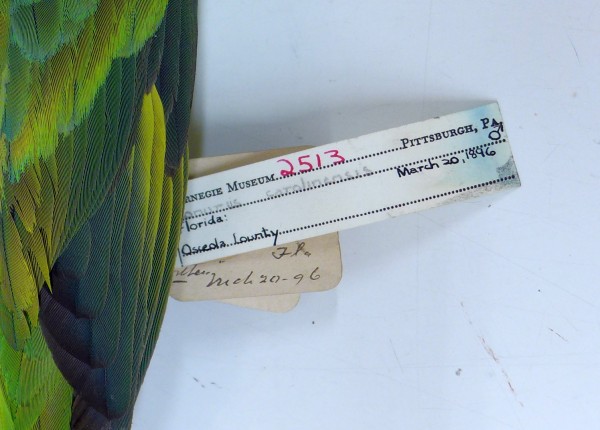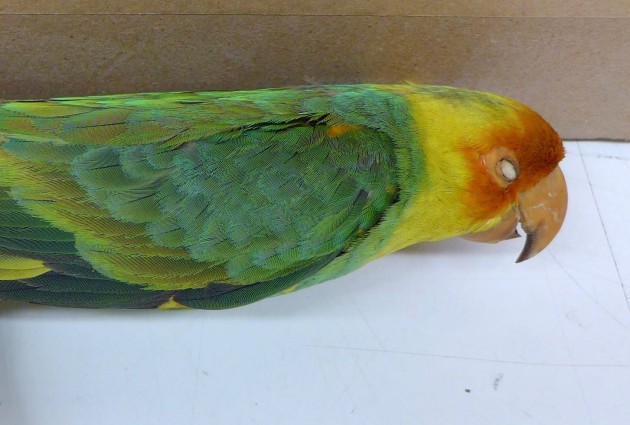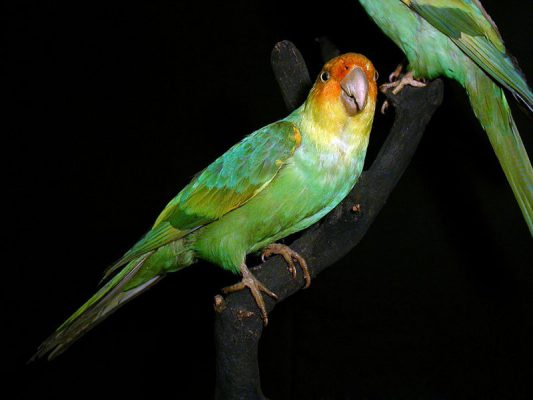
Two hundred years ago wild parrots lived in Pennsylvania. Now you find them only in museums. This one is at the Carnegie.
Carolina parakeets (Conuropsis carolinensis) were gregarious birds who lived in heavily forested areas along rivers and swamps from New York to Florida and west to the Mississippi. In flocks of 100 to 1,000 birds they nested in hollow trees and ate fruit and seeds, especially the seeds of cockleburs (Xanthium sp.).
As European settlers fanned out across North America we cut down the trees and planted orchards. Habitat loss and hunting as orchard “pests” put pressure on Carolina parakeets. John James Audubon noticed the bird’s decline as early as 1832.
By 1878 Carolina parakeets lived only in central Florida but they seemed to be doing well there. This specimen from Carnegie Museum was collected in 1896 in Osceola County, south of Orlando, Florida.

Unfortunately, wild Carolina parakeets disappeared suddenly in the early 1900s. The last captive bird died in the Cincinnati Zoo in 1918. Conuropsis carolinensis was declared extinct in 1939.
What was it like to live near wild parrots? Museums mounts give us a hint at their beauty …

… but for a real taste of the wild flocks go see their nearest relatives, black-hooded parakeets (Aratinga nenday), in Florida and California. I’ve seen them at Boynton Beach, Florida as described in this vintage article: What We Never Knew
(specimen photos by Kate St. John. photo of taxidermy mount at Museum Wiesbaden, Germany from Wikimedia Commons; click on the image to see the original)
There are 3 recognized species of African gray
Psittacus erithacus Erithacus:
Commonly known as Congo, African grey, Grey Parrot, Jaco, or Gabon gray. About 36 cm long, 450 to 600 grams. Ash gray plumage, bright red tail. Equatorial Africa.
Psittacus erithacus princeps:
Also known as Ghanaian Gray, West African Gray, or Boyd Alexander. Looks a lot like Congo parrot, but a little smaller. The Island of Principé and Fernando Po in the Gulf of Guinea.